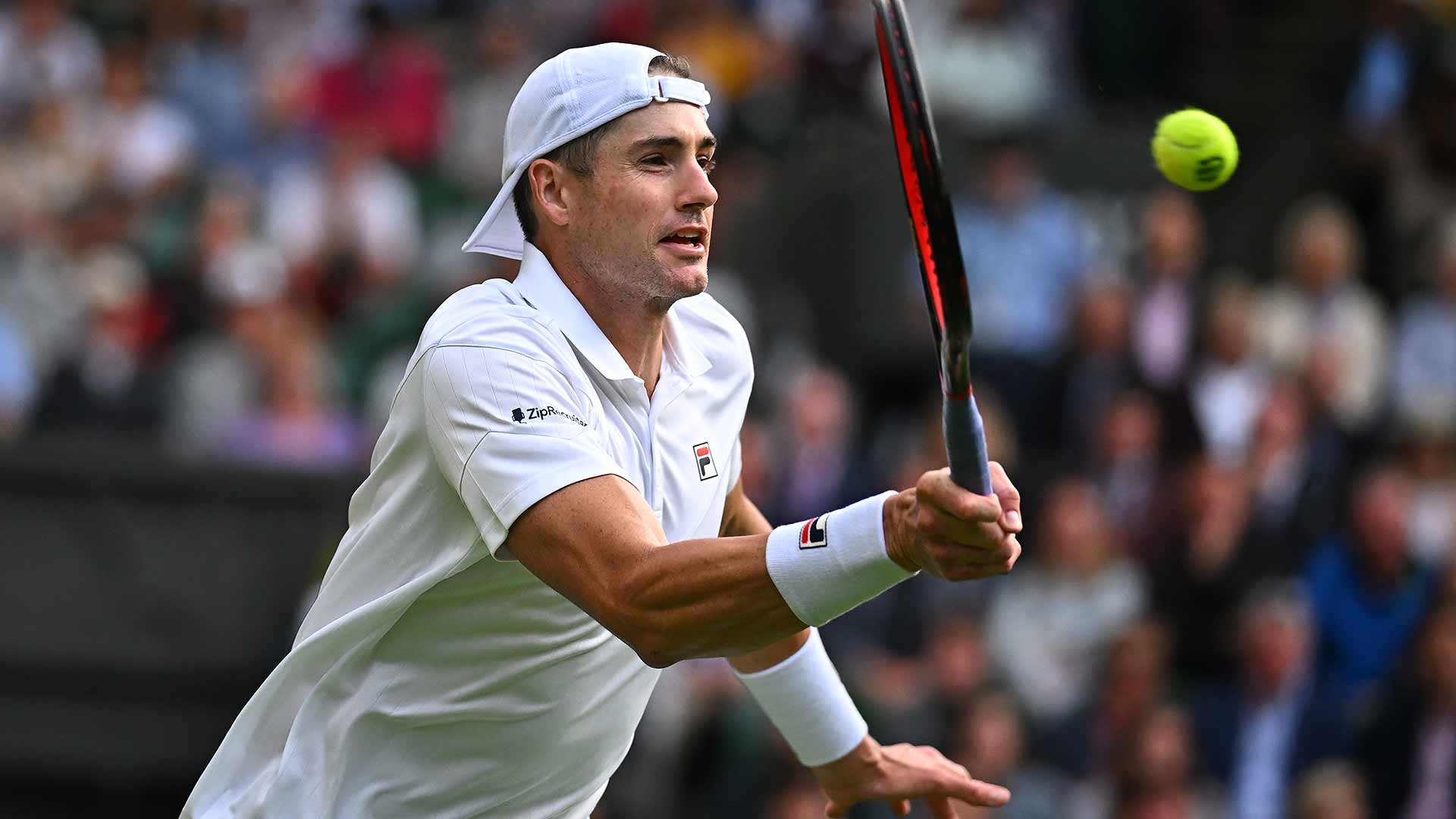Here’s a thought experiment: If John Isner hit ONLY first serves, would he win or lose more service games than his career average?
For clarity, the 37-year-old would still get two serves every point. But if he missed his first serve, he would hit another full-pace serve instead of a traditional second serve with more spin and less pace.
“I have a buddy who is super into analytics, and he is a really smart guy and he is a firm believer that is something I should do. Just going for two first serves,” said Isner, who on Friday is likely to set a new world record for most career aces, needing just five against Jannik Sinner in the Wimbledon third round to pass current leader Ivo Karlovic.
“There have been some situations where I have had the mindset of doing that, where my second serves have been massive. Less of a kick, more two first serves and it has served me well in the past. The key is to really, really commit to it.”
If only there were a way to stress test the idea. Enter Alex Michaels, a data scientist for TennisViz, the provider driving new statistical insights for Tennis Data Innovations, including new metrics such as Balance of Power, Conversion and Steal scores.
Michaels wrote a program that extrapolated Isner’s Infosys ATP Stats career averages for first serve percentage (69.1%) and first-serve winning percentage (78.7%) over 1 million service games, randomising those percentages to simulate match play. The mission was to identify whether a strategy of hitting first serves only would result in Isner improving his mark of holding 91.8 per cent of service games.
“I wanted to simulate randomness of performance in a match,” Michaels said. “While John puts about two out of every three first serves into play, there will be times when he makes five in a row or 10 in a row, and times when he may miss five in a row.”
While hitting two first serves would be a massive tactical change, the data show that it would have a very minor impact. Michaels’ model reveals that Isner would win 91.4 per cent of service games, down marginally from his career average of 91.8 per cent.
“I thought it would be close to his normal rate or maybe even slightly better, given his first serve is so powerful,” Michaels said. “This of course doesn’t account for the mental side. You don’t know how someone will react to serving a lot of double faults and whether they can be immune to the pressure of hitting a big second serve at crucial moments.”
Isner also noted that real-world pressure may impact winning percentages. “What’s hard about it would be having the conviction to go for another massive serve at 6/5 in a tie-break after missing your first serve,” he said.
 John Isner” />
John Isner” />
Photo: Corinne Dubreuil
While Isner isn’t ready to go ‘all in’ with the radical tactic, he says that there are some situations in which hitting two first serves is the right play.
“If I am playing Djokovic, I sort of know I have to do that,” the father of three said. “If I am playing someone ranked much lower than Djokovic at 70 or 80, of course he is still an incredible player, but it might be a little harder mentally to get myself up for hitting two first serves.”
Although hitting two first serves results in little change for Isner’s rate of holding serve, data show that players with more modest first serves would see a significant decline in the percentage of service games held if they adopted the tactic.
Isner Breaks Murray Duck To Reach Wimbledon Third Round
Michaels cited Frenchman Hugo Gaston as an example. The Frenchman puts about 60 per cent of first serves into play, wins about 65 per cent of first-serve points and holds about 73 per cent of service games. On Michaels’ modelling, Gaston would win just 62 per cent of service games if he hit two first serves.
Isner’s career 69.1 first-serve percentage tops the chart for all active players. He is fourth on the list of career first-serve points won (78.7%) behind leader Ivo Karlovic, Milos Raonic and Sam Querrey. He is second among active players for best percentage of service games held (91.8%), behind only Karlovic (92%)
The 6′ 10″ American is third on the list of second-serve points won (56.1%) behind only leader Rafael Nadal and Roger Federer.



